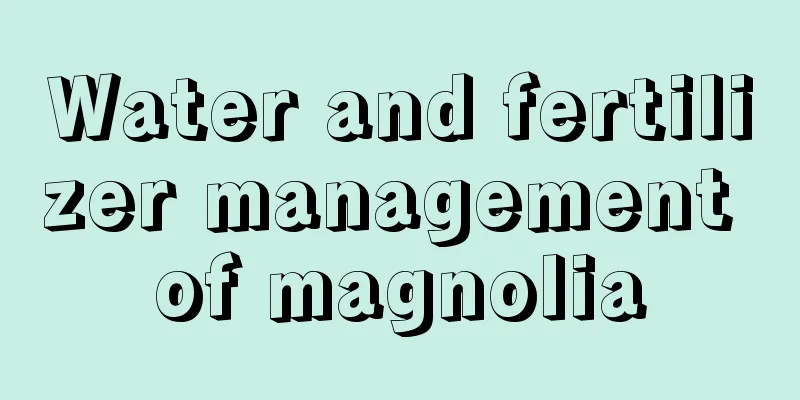Water and fertilizer management of magnolia

Magnolia watering tipsMagnolia has fleshy roots, which require timely replenishment of water, but are afraid of waterlogging. During the flowering period of magnolia, the soil should be kept slightly moist. In summer and autumn, it is generally watered once a day. However, in hot weather, it is best to water once in the morning and evening. In addition, you can use a spray or shower to spray water on the magnolia leaves and the ground of the flowerpot to increase the surrounding air humidity. After autumn begins, you should gradually reduce watering. This can slow down the rooting speed of the magnolia to promote the growth and maturity of the branches, which is beneficial for the magnolia to overwinter. Generally no watering is required in winter, and only appropriate watering can be done when the soil is too dry. In spring or other rainy months, you should pay attention to the problem of water accumulation and control the frequency and amount of watering. Otherwise, it will easily cause the magnolia roots to rot and even cause the death of the plant. In addition, if you use tap water for watering, you must also pay attention to prevent the soil from becoming alkaline. Once yellowing of leaves is found, measures such as applying ferrous sulfate water or spraying the leaves with 0.3% to 0.4% vinegar solution should be taken to treat the leaves. Magnolia fertilization tipsMagnolia is a flower that likes fertilizer, but it should avoid too much fertilizer. Since magnolia has a long flowering period and produces many flowers, providing sufficient nutrients in a timely manner will make the magnolia bloom more and larger. Fertilizers generally use fully decomposed organic fertilizers. The principle of fertilization is to apply thin fertilizers frequently, or to apply light fertilizers first and then concentrated fertilizers. Avoid applying raw fertilizers or concentrated fertilizers, otherwise it will burn the roots. Apply sufficient base fertilizer when potting. Generally, fertilizer is applied twice during the growing season, once in early spring and once in May-June. This is beneficial to the differentiation of flower buds and promotes the growth of magnolia. During the flowering period from May to October, fertilizer should be applied every 5-7 days, generally choosing organic fertilizers mainly composed of phosphorus and potassium fertilizers. At the same time, foliar fertilization should be carried out every 7-10 days, and 0.5% plant growth hormone and 0.3% potassium dihydrogen phosphate can be used for leaf spraying. Newly planted seedlings do not need to be fertilized. Fertilize them after the leaves fall or in the spring of the following year. |
<<: Desert Rose Cuttings and Grafting
Recommend
Can I drink dandelion root tea for a long time? Is it good to drink dried dandelion water for a long time?
1. Can I drink it for a long time? Dandelion root...
The difference between Aspidistra and Spathiphyllum
1. Morphological differences The rhizome of Aspid...
How to plant Clivia? Cultivation methods and steps for newly bought Clivia
The leaves of Clivia are emerald green and look v...
What vegetables are suitable for growing in Tianjin?
What vegetables are suitable for growing in Tianj...
How to make wolfberry bonsai
Material selection When wolfberries begin to spro...
Can chrysanthemums bloom in all seasons?
Chrysanthemums can bloom in all seasons Chrysanth...
How to take care of the newly bought golden diamond
1. Change the soil It is best not to change the s...
How to water roses
Watering principles First of all, you need to kno...
The efficacy of Loropetalum
1. Antidiarrhea Loropetalum has a strong astringe...
What kind of fertilizer is good for Ophiopogon japonicus base fertilizer (base fertilizer application method)
Effect of Ophiopogon japonicus base fertilizer Op...
The value and eating taboos of persimmon
Effects Fresh Persimmon Ripe fresh persimmons are...
What to do if the leaves of jade tree become soft
Reasons why the leaves of jade tree become soft T...
When is the best time to plant dahlia seeds?
Dahlia seed planting time Dahlia is a perennial p...
What is the best way to plant longan seedlings?
Longan is also known as laurel. Because its fruit...
The growth environment conditions and characteristics of yew
Environmental conditions and requirements for the...









